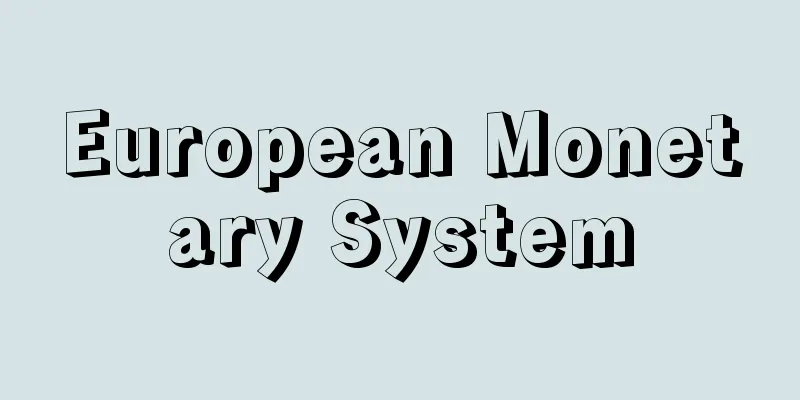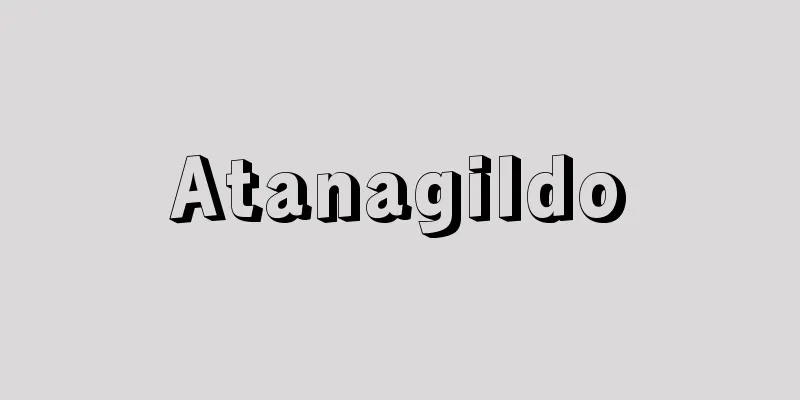European Monetary System

|
An interim measure established by the European Community (EC), the predecessor of the European Union (EU), to complete the monetary union. Abbreviated as EMS. The EC has achieved a customs union and a common market, and has been moving towards the completion of economic integration, but the next goal, monetary union, aims to unify the currencies of EU member states and ultimately to establish a single European currency system, but this cannot be achieved all at once because it involves political issues such as the partial transfer of sovereignty to each country. Therefore, the EMS was established in March 1979 as an interim measure to achieve this. The basis for the establishment of the EMS was the EC's common floating exchange rate system, which was created in response to the second devaluation of the dollar in February 1973. The common floating exchange rate system was intended to mitigate the effects of the dollar crisis and promote the integration of regional currencies, but currency instability did not subside even after that, and the French franc withdrew, rejoined, and then re-exited, while the mark and guilder were revalued one after another, so monetary integration did not progress. Negotiations were then held between (then) West Germany and France, and the EMS was the concept that was agreed upon at the European Council in Bremen in July 1978. The EMS inherited the common floating exchange rate system, and adopted a fixed exchange rate system within the region and a floating exchange rate system outside the region. Within the region, each currency was fixed at its parity, and the exchange rate was allowed to fluctuate within a range of 2.25% above and below (expanded to 15% above and below in August 1993). This is called the parity grid system. The member currencies are expressed in the common unit of calculation, the ECU. The value of the ECU is determined by a standard basket method based on the currencies of the EC member states, and the composition of the basket is regularly checked. When the exchange rate reaches the limit of the fluctuation range, the relevant central bank must suppress the fluctuation of the rate by intervening in the market. The European Monetary Cooperation Fund (EMCF) was established to help the member countries in fulfilling their stability obligations. In accordance with the EU Treaty (Maastricht Treaty) agreed at the end of 1991, the single currency, the euro, began to be used as a settlement currency in 11 EU member states in January 1999, and the EMS was dissolved at the end of 1998. In January 2002, euro banknotes and coins began circulating in 12 countries, including Greece in addition to the original member countries, and all conversions to euro currency were completed by the end of February of the same year. [Tsuchiya Rokuro] "Shimazaki Hisaya, The Development of European Monetary Integration (1987, Nihon Keizai Hyoronsha)" ▽ "Shimano Takuji, Economic Analysis of European Monetary Integration (1996, Yuhikaku)" ▽ "Tanaka Monetary System: The European Monetary System - The Focus of European Monetary Integration (1996, Yuhikaku)" ▽ "Sakurai Joujiro, EU Monetary Integration - Progress and Prospects, latest edition (1998, Shakai Hyoronsha)" ▽ "Kaji Sahoko, The Economics of the International Monetary System - Euro, Asia, Japan (2004, Nihon Keizai Shimbun)" [References] | | | | |Source: Shogakukan Encyclopedia Nipponica About Encyclopedia Nipponica Information | Legend |
|
ヨーロッパ連合(EU)の前身であるヨーロッパ共同体(EC)が通貨同盟を完成させるために設けた中間的措置。略称EMS。ECは関税同盟、共同市場を実現し、経済統合の完成に向かって進んできたが、次の目標である通貨同盟は、EU加盟国通貨を統合し最終的にはヨーロッパ単一通貨制度を目ざすもので、これには各国の主権の部分的委譲という政治問題が絡むため、一挙には推進できない。そこでそれへの中間的措置として1979年3月に設立されたのがEMSである。 EMS成立の基礎は、1973年2月のドルの再切下げを契機に誕生したECの共同フロート制(共同変動相場制)である。共同フロート制はドル危機の影響を緩和し、域内通貨の統合促進を目的としたが、しかしその後も通貨不安は収まらず、フランス・フランの離脱、復帰、再離脱やマルク、ギルダーの切上げなどが相次いだため通貨統合は進展しなかった。そこで西ドイツ(当時)とフランスとの間で折衝が進められ、78年7月のブレーメンにおけるヨーロッパ理事会でまとまった構想がEMSである。 EMSは共同フロート制を継承したものであるから、域内固定レート制、域外変動レート制をとった。域内では各通貨は平価を固定し、為替(かわせ)レートはその上下各2.25%の幅で変動が認められた(1993年8月より上下各15%へ拡大)。これをパリティ・グリッドparity grid方式という。参加国通貨は共通の計算単位ECU(エキュ)で表示される。ECUの価値はEC加盟国の通貨による標準バスケット方式で決まるが、バスケットの構成比は定期的に点検される。為替レートが変動幅の限度に達した際には、関係中央銀行は市場介入によってレートの変動を抑えなければならない。このような参加国の安定義務を助けるために創設されたのが、ヨーロッパ通貨協力基金(EMCF)である。1991年末に合意されたEU条約(マーストリヒト条約)に沿って、99年1月にEU加盟国のうち11か国で単一通貨ユーロが決済通貨として使用され始めたことにより、EMSは98年末に発展的解消を遂げた。なお、2002年1月には当初の参加国にギリシアを加えた12か国でユーロ紙幣、ユーロ硬貨の流通が始まり、同年2月末までに各国通貨とのすべての切替え作業を終えた。 [土屋六郎] 『島崎久弥著『ヨーロッパ通貨統合の展開』(1987・日本経済評論社)』▽『島野卓爾著『欧州通貨統合の経済分析』(1996・有斐閣)』▽『田中素香編著『EMS:欧州通貨制度――欧州通貨統合の焦点』(1996・有斐閣)』▽『桜井錠治郎著『EU通貨統合――歩みと展望』最新版(1998・社会評論社)』▽『嘉治佐保子著『国際通貨体制の経済学――ユーロ・アジア・日本』(2004・日本経済新聞社)』 [参照項目] | | | | |出典 小学館 日本大百科全書(ニッポニカ)日本大百科全書(ニッポニカ)について 情報 | 凡例 |
>>: European Monetary Agreement
Recommend
Toyo Keizai Shinpo - Toyo Keizai Shinpo
A financial and economic magazine. It was founded...
hide and seek
A type of children's game. One person is chose...
Solar day - solar day
〘Noun〙 The time it takes for the sun to cross the ...
Arakutokenaganomi - Arakutokenaganomi
...The Chinese sand flea, Tunga caecigena , takes...
Egyptian and Etruscan Museum
...(2) Chiaramonti Museum: A collection of ancien...
Position - 1
[Noun] (Suru) 1. The place where something is. The...
Princess Seigen Sakura
A type of Kabuki, Kyogen, and Bunraku puppet theat...
Palmyra palm
A large palm plant that is usually cultivated and ...
Oscan language - Oskan (English spelling)
An extinct language belonging to the Italic branch...
Galago - Galago (English spelling)
A general term for animals belonging to the subfa...
hymnos
…Christian chants, originating from the Greek hym...
Food currency - Shokka
〘Noun〙 (From "Book of Documents - Hong Fan&qu...
Mysterious Tales - Shikai Shosetsu (English)
A collection of short stories about supernatural p...
Gold crown (tooth) - kumquat
...However, the term "dentures" general...
Rotating prism camera - Rotating prism camera
...This technique is known as high-speed or ultra...









